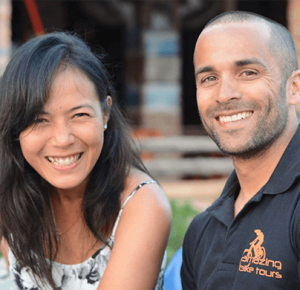Tibet – Getting to know Tsetang
The Yarlung Tsangpo is known as Tibet’s Mother River. It runs from the Gyima Yangzong Glacier across the Tibetan Plateau, passing through the deepest canyon in the world, and eventually finishing 1,700 miles later in the Bay of Bengal. Around a third of the population dwell in the fertile lands around the Yarlung Tsangpo, and if they were ever to trace their ancestry, they would find themselves back at the river’s middle section, where on the south bank lies the city of Tsetang, capital of Shannan (Lhoka) prefecture, and the cradle of Tibetan civilization.
Tibet Tsetang Travel Guide
Tsetang is a city of royal, religious and rural firsts. Firstly (sorry!), the Yumbu Lhakhang Palace here is said to have been the first building in Tibet, erected in honour of the king in the 2nd century, and still standing today. In terms of religion, the 8th century Samye Monastery is thought to be the country’s first Buddhist gompa. And (final first, we promise) according to local legend, the first field ever to be farmed in Tibet can be found near Tsetang in the Yarlung Valley.
Once the seat of mighty emperors wanting to control trade routes into Bhutan and India, Tsetang is now a Chinese military and administrative base, with a modern centre, and effectively merged with the nearby city of Nedong. But there remains a charming old Tibetan quarter, bunched around the base of the sacred mountain Gangpo Ri, from where you can conveniently explore the fascinating historic temples, monasteries, caves and stupas of the Yarlung Valley.
Famed for the quality of the apples and pears that originate here, the valley terrain is ruggedly beautiful with a climate that is pleasantly mild. Sand dunes bank up against the meandering river, while the landscape is dotted with pure springs, crystalline lakes and dramatic mountain peaks. There could hardly be a finer place for the story of Tibet to begin.
What to do in Tsetang
The Samye Monastery is laid out in a mandala shape according to the tenets of Buddhist cosmology, with a main temple representing a fabled palace atop Mt. Meru, and over 1000 chortens serving as a ring of mountains surrounding the universe. Not just Tibet’s earliest monastery but also its first university, Samye hosted a debate in the 8th century to decide whether the country would follow Indian Buddhism or Chinese Zen Buddhism. Indian influence won the day.
A long hike above Samye brings you to the Chim-puk Hermitage. This network of caves was used as a meditation retreat by many notable Buddhist figures, including the Guru Rinpoche, and is now inhabited by nuns who embrace a simple life amid a landscape of breathtaking natural beauty.
Just outside Tsetang, the Trandruk (Changzhug) Monastery is a very early geomantic structure and one of many said to have been built by Songtsen Gampo to trap an unruly ogress. The temple’s best-known treasure is a stunning thangka inlaid with thousands of pearls, said to have been made by Princess Wencheng, Songtsen Gampo’s Chinese wife.
Around Tsetang
Branching off the Yarlung Valley to the southwest is the ‘Valley of the Kings’. Estimates vary as to the number of tombs here, but there are at least 11 of them, great mounds of earth that blend seamlessly into the hilly scenery. It is believed that these weather-beaten burial mounds contain ancient rulers including, possibly, Songtsen Gampo, the 7th century king and founder of the Tibetan empire.
The tower of the Yumbu Lhakhang Palace is only 11 metres high, yet it seems much taller because of its strategic position on a ridge overlooking the Yarlung Valley. The origins of this historic fortress are shrouded in the mysteries of time, but the current structure has been completely rebuilt following the damage it suffered during the Cultural Revolution. As you might expect, the views are nothing short of mindblowing.
select another destination
Look down from the Yumbu Lhakhang Palace and you can see Zortang, believed to be the first field ever cultivated in Tibet. Farmers will often take a handful of the soil from here to sprinkle on their own fields, in the hope of a good harvest.
An unusual origin myth
Thousands of devotees make a pilgrimage every year to a modest cave close to the summit of Gangpo Ri. It is here, according to an ancient legend from the Bon religion, that a meditating monkey encountered a female demon. An unlikely romance blossomed quickly, and they married, with their offspring going on to form the six tribes of Tibet.
Speak to someone who's been there
Tibet ⟩ Tsetang





